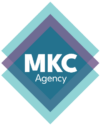For B2B sales, there is no “easy answer” or “one-size-fits-all” solution. There are, of course, great fits, strategies that deliver reliable results when applied correctly—but that’s not what we’re here to talk about today.
The complexity of sales hasn’t stopped a few overeager writers from telling tales of techniques that do away with the arduous prospecting, research, and empathetic communication that leads up to a connection. Many think it’s possible to skip over the intro work and quickly land a demo through the Hero Story—a template for persuading customers that your solution is the best on the market by placing them into a narrative you control.
The allure of the Hero Story for marketers is that it is rooted in empathy and tees up a problem>solution dialogue so neatly that a toddler could follow it. But, as the title of today’s blog alludes to, the simplicity of this narrative is its biggest strength as well as its biggest drawback.
Today, we’ll dig into the Hero Story—what is it, how can I use it effectively, and why should it be treated as a tool rather than a single solution? All of this and more are coming right up.
What Is The Hero Story?
A Hero Story involves at least two characters—the client and your brand. In this narrative, a problem is established (usually industry-specific), and a daring guide (yourself) walks the client to a solution (your product). From there, the client utilizes your product and overcomes the challenge, resulting in better profitability and less friction in their organization.
Of course, you and your product are the heroes in this story since you bring an end to the pain. Still, likewise, the customer becomes a hero by bringing this treasure back to the decision-makers within the organization. Early on into sales, you must learn that you are less important than the client, even if your solution enables the prospect for success.
In other words, you are not Excalibur—you are Merlin. As a guide, you take the client to the solution to claim the benefits. A neat little package in which everyone lives happily ever after!
While this is a helpful model for a particular type of persuasive pitch, it relies on a few significant assumptions that bring down the strategy’s overall effectiveness.
How Assumptions Can Drag You Down
The Hero Story can put you into an awkward position when you incorrectly assume aspects of the prospect’s situation.
Consider how quickly a plot hole can bring down your enjoyment of a film—now imagine someone on the other end of the phone insisting that their version of the story makes more sense—not an ideal conversation to be having.
By incorrectly prospecting or researching your clients (in other words, by not letting them pen their own story), you run the risk of speaking over the actual pain points and diminishing your credibility.
The Hero Story can still be a good framework; you just need to ensure that two questions are anticipated and answered in your mind before you can go ahead with spinning the tale.
Crafting A Better Story
Without answering basic questions about how your product fits into the client’s work structure, you are weaving a fairy tale about yourself rather than your client’s ideal state.
The two questions you must first answer as an effective B2B sales prospector are:
1) What buyers are the best fit for my product?
This could mean titles within a company, specific niche industries, or dissatisfaction with current tools.
2) What problems can my solution solve that the alternatives can’t?
This is called “differentiation” and is a pillar of crafting a compelling pitch.
With these two questions in mind, you are much better equipped to cast your prospect as a hero. Listen, refine, and articulate your value as you go. Look for that moment where the customer recognizes the hilt in the stone for what it is—a magic sword that can bring them closer to their goals than anything before.
Since its inception, MKC Agency has been articulating the value of B2B tools and training SDRs, team leads, and marketing departments to communicate value effectively using trusted methods. None are a one-size fit, and each requires as much listening and empathy as they do a robust understanding of your product.
For better communication, sales strategizing, and content that converts, [contact the MKC Agency] or [explore our SDR training] courses.

